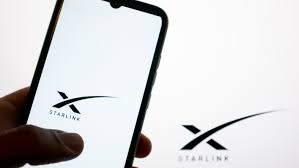
Breaking News
 Red Light Therapy And Men's Health: Does It Really Work?
Red Light Therapy And Men's Health: Does It Really Work?
 Kash Patel's New FBI Clown Show - The Bizarre Interview He Will Regret For The Rest of His Life
Kash Patel's New FBI Clown Show - The Bizarre Interview He Will Regret For The Rest of His Life
 One Rifle I Trust for Everything
One Rifle I Trust for Everything
 The West Coast Is Being Absolutely Pummeled By Trillions Of Gallons Of Rain, Wind Speeds Of Up...
The West Coast Is Being Absolutely Pummeled By Trillions Of Gallons Of Rain, Wind Speeds Of Up...
Top Tech News
 This tiny dev board is packed with features for ambitious makers
This tiny dev board is packed with features for ambitious makers
 Scientists Discover Gel to Regrow Tooth Enamel
Scientists Discover Gel to Regrow Tooth Enamel
 Vitamin C and Dandelion Root Killing Cancer Cells -- as Former CDC Director Calls for COVID-19...
Vitamin C and Dandelion Root Killing Cancer Cells -- as Former CDC Director Calls for COVID-19...
 Galactic Brain: US firm plans space-based data centers, power grid to challenge China
Galactic Brain: US firm plans space-based data centers, power grid to challenge China
 A microbial cleanup for glyphosate just earned a patent. Here's why that matters
A microbial cleanup for glyphosate just earned a patent. Here's why that matters
 Japan Breaks Internet Speed Record with 5 Million Times Faster Data Transfer
Japan Breaks Internet Speed Record with 5 Million Times Faster Data Transfer
 Advanced Propulsion Resources Part 1 of 2
Advanced Propulsion Resources Part 1 of 2
 PulsarFusion a forward-thinking UK aerospace company, is pushing the boundaries of space travel...
PulsarFusion a forward-thinking UK aerospace company, is pushing the boundaries of space travel...
 Dinky little laser box throws big-screen entertainment from inches away
Dinky little laser box throws big-screen entertainment from inches away
 'World's first' sodium-ion flashlight shines bright even at -40 ºF
'World's first' sodium-ion flashlight shines bright even at -40 ºF
FCC Allows SpaceX Starlink Direct to Cellphone Power for 4G/5G Speeds

It is unclear if the max speed requires any extra antenna on existing phones. Elon Musk has previously mentioned that direct to cellphone from satellite could have 10% of the speed of the broadband satellite service to Starlink dishes. Elon obviously knew about the power and spectrum increases that are happening.
500 Starlink satellites have direct to cell service. The FCC permit allows up to 7500 Starlink satellites to use direct to cell at higher power levels.
Starlink has agreements with 8 mobile network operators (MNOs) globally, representing approximately 261 million subscribers, though this reflects potential reach rather than active users. Starlink has partnered with several mobile carriers worldwide for its Direct to Cell service. Confirmed partners include T-Mobile (U.S.), Rogers (Canada), One NZ (New Zealand), Optus (Australia), KDDI (Japan), Salt (Switzerland), and Entel (Chile and Peru). The trial period include other companies and there are talks of discussions with apple.
Texting: Fully operational in beta now (March 2025), with commercial rollout expected by mid-2025 (e.g., T-Mobile plans to end the free beta in July 2025).
Voice and Data: SpaceX aims to introduce voice and data services in 2025, with specific rollout depending on regulatory approval and satellite deployment. T-Mobile's roadmap indicates these features will follow the texting phase, likely starting in mid-to-late 2025 after the beta concludes. Partners Rogers and Optus have echoed this timeline, targeting voice and data in 2025 as well.
FCC has authorized a 770% increase in power. Power flux density at -110.6 decibels per meter square per megahertz. Before it was -120 decibels per meter square per megahertz
Starlink is not yet offering internet and voice but they will and it will be at far faster speeds.
The new Starlink satellites will be at lower altitudes (300 kilometers) which will also improve latency and communication speeds.



